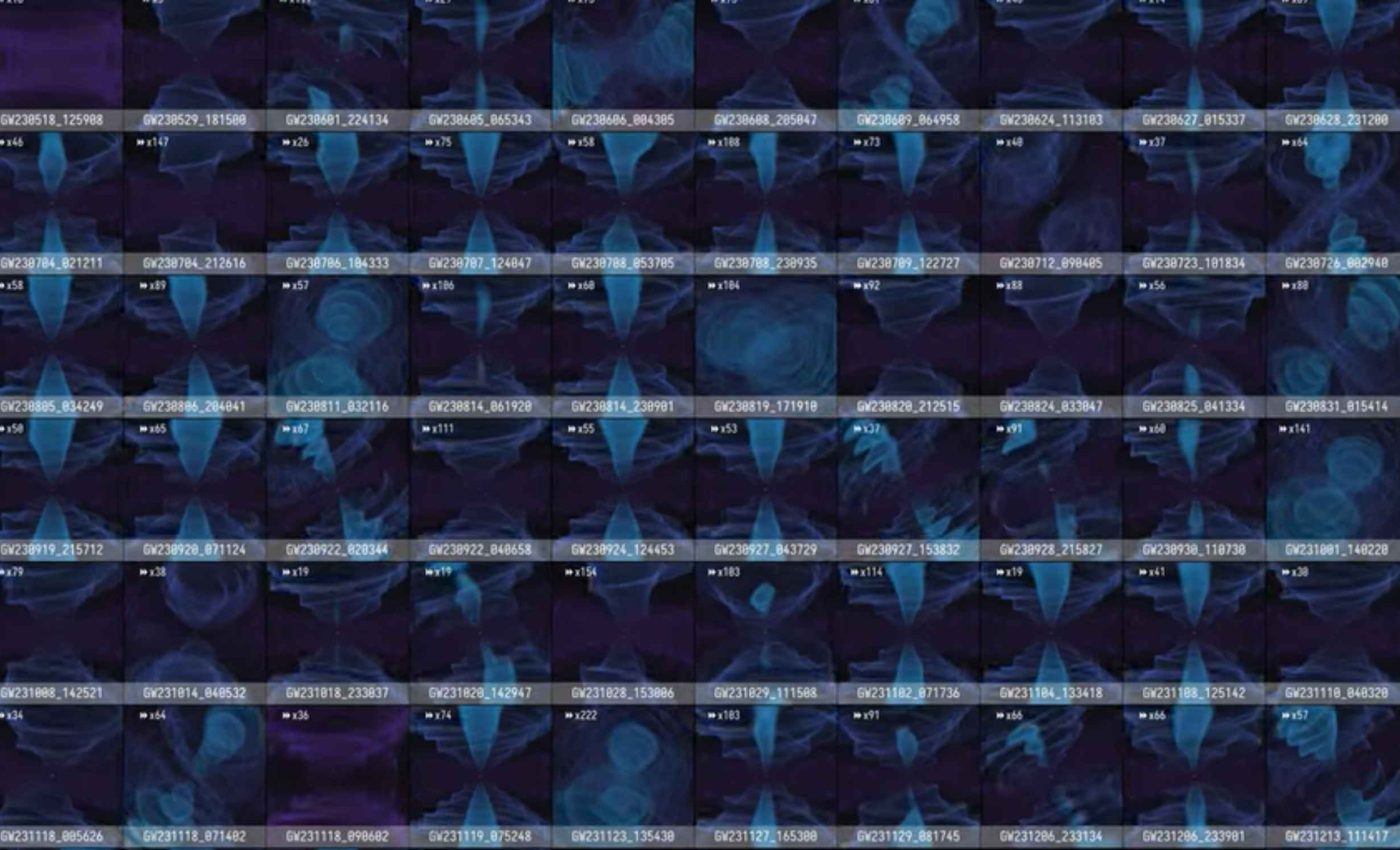
Astronomers release the largest catalog of black hole mergers to date
An international network of observatories has issued version 4.0 of its catalog, listing 128 new black hole merger candidates detected during the first phase of the fourth observing run, O4a.
This update expands the list of black hole and neutron star collisions found by listening for tiny ripples in space and time called gravitational waves. It shows how gravity based listening can find events that ordinary telescopes often miss.
Importance of black hole mergers
One of the scientists guiding this field is Dave Reitze of Caltech, who serves as LIGO’s executive director. He has spent years helping push the detectors to hear fainter and faster signals.
More events mean better tests of how nature builds heavy objects. As the count grows, patterns in mass and spin start to stand out.
These patterns tell us where these systems likely form. Some grow in crowded star clusters, while others form in isolated pairs.
More precise measurements also reduce guesswork in models. That is how catalogs turn into insight about where stars live and die.
GTWC 4.0 catalog of black hole mergers
GWTC 4.0 is not just a list of names and numbers. It includes measured properties for a large set of confident detections and flags for events that need more scrutiny.
An accompanying paper describes the open data set, which includes the main recordings, instrument details, and notes on data quality. It also offers a simple tool that lets scientists look up events and check the findings for themselves.
The catalog spans sources that merge into black holes of many sizes. It also includes candidates that combine a black hole with a neutron star, a compact stellar core.
Each entry lists when the signal arrived, how strong it was, and what the most likely masses and spins were. Researchers then feed those numbers into population studies.
Record breaker in the list
Among all the detections, one from November 23, 2023, broke records. The collision created a black hole roughly 225 times heavier than the Sun, the biggest yet confirmed through gravitational waves.
The component masses fall in a range that challenges simple models of how single stars collapse. The data suggest that at least one of the two black holes may have grown from earlier mergers.
“This observation once again demonstrates how gravitational waves are uniquely revealing the fundamental and exotic nature of black holes throughout the universe,” said Dave Reitze.
That perspective captures why a single extreme event can reshape ideas about how massive black holes form.
This event will anchor new studies of spin and environment. It also gives theorists a clear target for testing models of black hole growth.
Detecting black hole mergers
A binary black hole merger sends out a clean pattern in frequency and time. That pattern lets scientists weigh the two objects and the final remnant.
An interferometer is a device that splits laser light along two perpendicular arms and compares the timing as the beams return.
Passing waves stretch one arm by a tiny amount and squeeze the other, which shows up as a change in the interference pattern.
The measured quantity is called strain, a fractional change in length. The detectors record this strain tens of thousands of times each second.
Patterns in the strain map to the system’s mass and spin. Better calibration and lower noise make those inferences tighter.
What comes next
The fourth observing run continues into 2025, with more weeks of data to analyze. The team will add new results as they pass internal checks.
The collaboration posts public alerts for candidates in real time through NASA’s General Coordinates Network. Those alerts help telescopes search the sky for any light or particle signals that might accompany rare sources.
New detections will keep filling in the picture of how massive objects form and behave. Each one adds more detail about their size, motion, and how they interact with their surroundings.
These discoveries also help scientists check whether the rules of gravity still hold true under the most extreme conditions.
As they study the signals more closely, researchers will watch for subtle effects that happen when light or waves pass near very heavy objects, which can bend and brighten what we see from across the universe.
Explore the data yourself
Anyone can download the open data and try out tutorials from the community. Students, teachers, and hobbyists regularly build tools that explain key steps and ideas.
To see how masses stack up across detections, check out the interactive Masses in the Stellar Graveyard visualization. It plots black holes and neutron stars found through gravitational waves next to ones found with light.
Comparing those two discovery methods shows what each is best at finding. Gravitational waves excel at heavy, dark pairs that do not emit light.
As the catalog grows, that plot fills in new corners of parameter space. Each point helps map how stars live, collide, and end.
—–
Like what you read? Subscribe to our newsletter for engaging articles, exclusive content, and the latest updates.
Check us out on EarthSnap, a free app brought to you by Eric Ralls and Earth.com.
—–













